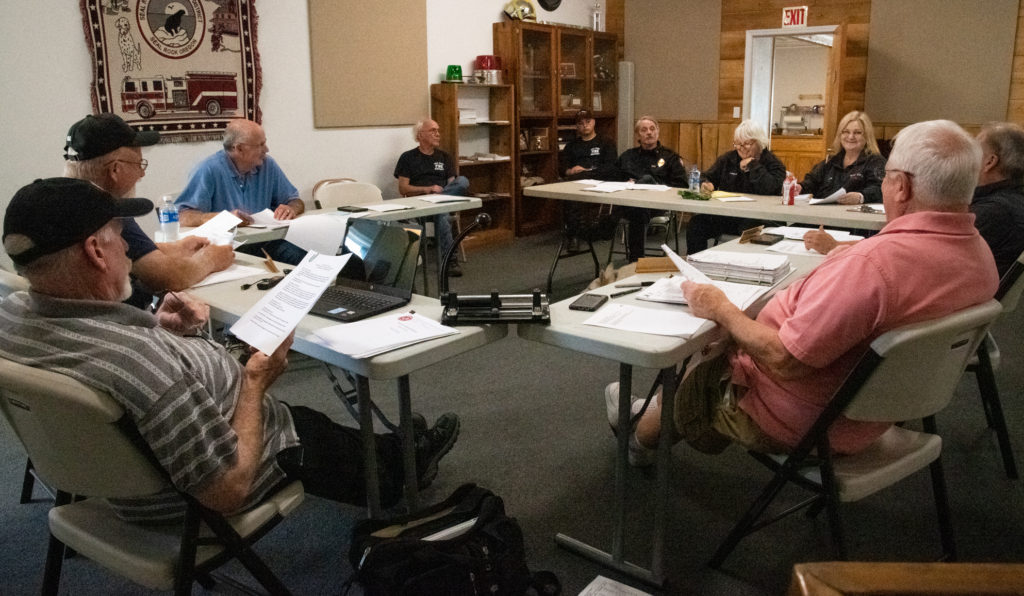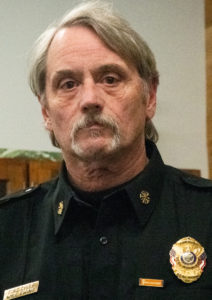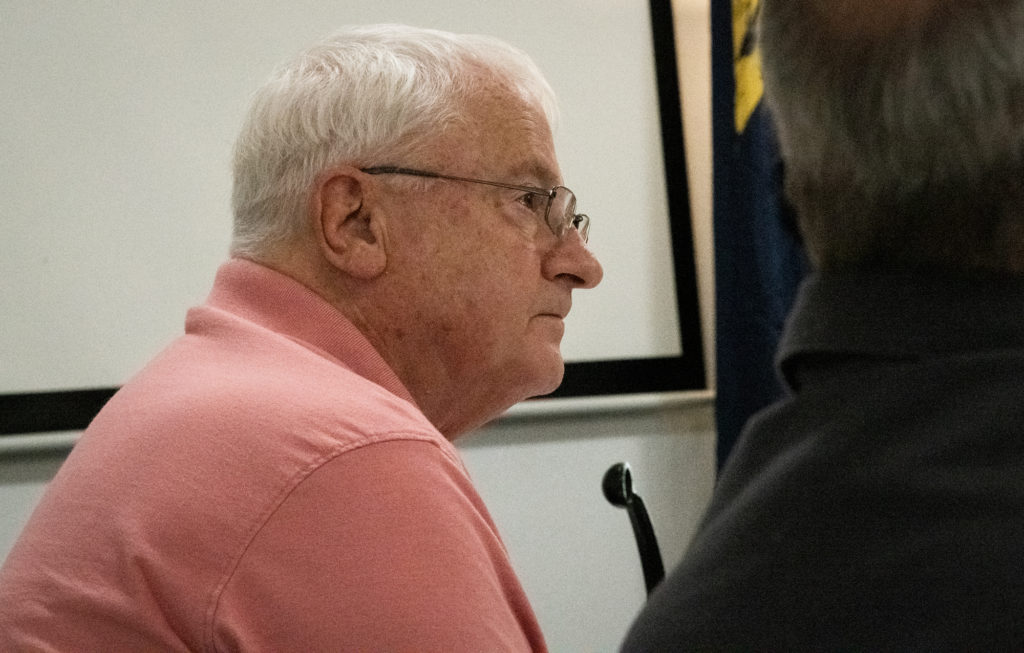
By JORDAN ESSOE/YachatsNews.com
SEAL ROCK — As one cooperative agreement goes up in smoke between Seal Rock Rural Fire Protection District and Central Oregon Coast Fire & Rescue, will another take its place to ensure fire safety for both communities?
Maybe.
There are actually three separate agreements between the neighboring fire districts — mutual aid, automatic aid and an intergovernmental agreement. It is important to distinguish between them, identify which are active, which exist in writing, which are simply being honored, and which are being disregarded.
Mutual aid is a countywide arrangement organized by the Lincoln County Fire Defense Board, which is de up of all fire chiefs in the county. It is designed to create a structured network and response plan for backup support if a 9-1-1 emergency cannot or should not be handled solely by responders in any individual district.
Mutual aid is triggered when specifically asked for. For example, if Central Oregon Coast needed support with an incident in Waldport, they might request over the radio for mutual aid from either Seal Rock or the Yachats Rural Fire Protection District, or both.
In March, the fire defense board sent a fresh mutual aid agreement to the 10 agencies in the county, including Seal Rock and Central Coast. Neither Seal Rock nor COCF&R signed immediately, despite the defense board’s request for prompt compliance. Central Coast signed in July, after two recalled board members and its chairman who had resigned were replaced.

Seal Rock plans to sign this week. Fire Chief Will Ewing says he is confident his department can now meet all the mutual aid agreement’s personnel and equipment requirements, after successfully recruiting 19 volunteers. It currently has one paid firefighter — down from four last year — and fills other shifts with temporary help from other agencies.
Response within the county to mutual aid requests remains uninterrupted regardless of what signatures are missing from the 2022 agreement.
Automatic aid is a different contract, usually made between two districts, and requires each cooperating agency to automatically respond to the other’s emergency calls.
The agreement may specify which priority calls are subject to the agreement, but for calls that qualify, there is no demand for responders to evaluate an emergency before asking for support from another district. Automatic aid saves critical response time that can be decisive in the event of a structure fire, automobile accident, or high-priority medical call.
An intergovernmental agreement between Seal Rock and COCF&R detailed an even closer, more integrated working relationship that included shared equipment and supplies, joint training, and a mutual staffing of engines.
That fell apart last fall when a new Seal Rock board instructed Ewing to station its firefighters in Seal Rock, to institute its own training, respond only to certain calls, and let attrition decrease the number of employed firefighters. In turn, Central Oregon Coast’s board authorized hiring two more firefighters to ensure it had two on each engine responding to calls.
It makes little difference whether the agreement terminates in December as COCF&R claims or last month as Seal Rock asserts, because it is no longer being honored by either.
In a certified letter sent to the Seal Rock board in late August, the Central Oregon Coast board officially declared its intent to allow the agreement to expire at the end of the year, but also explained it had appointed two board members to potentially meet with Seal Rock to “explore opportunities” for the two agencies to continue working together.

Seal Rock Fire District board member “Skip” Smith, who served decades as a fire chief, said during last week’s meeting that he would “like to see how Seal Rock, Central Coast, [and] Yachats can cooperate to improve overall fire and rescue service within the three-district area.”
Central Coast asks about IGA
During last week’s Seal Rock board meeting, board treasurer Paul Rimola cited documents and Newport News-Times articles from much earlier in the year and expressed frustration about past animosity and confusion surrounding the agreement.
“I’d fight any reopening of the IGA as long as this type of poisoned stuff is going around,” said Rimola.
In the aftermath of the discarded agreement, the question of a freshly codified automatic aid agreement between the two districts has become relevant, and important for the fire safety of both communities.
Seal Rock board director “Skip” Smith said, “I would like to see an automatic aid agreement for all structure fires.”
“Absolutely not a problem,” Ewing responded, but clarified that there was nothing in writing right now. Smith asked for it to be in writing.
“I can try,” Ewing said. “I’m trying.”
It is unclear whether a new automatic aid agreement would be best organized first between boards or between chiefs, but COCF&R Fire Chief Jamie Mason has expressed a willingness to meet with Ewing to discuss automatic aid.
Mason says that an automatic aid agreement between COCF&R and Seal Rock and COCF&R and Yachats has existed for a long time, but no one seems to have a current, signed or dated copy.
Some argue that fire incidents get treated the same way by 9-1-1 dispatch with or without an official automatic aid agreement in hand.
“Everybody wants to go to a fire,” said Seal Rock board director Mike Burt.
Ewing agreed that the system is already working. “Let me work on the documentation of it,” he said. “But it’s already there. It’s been there for decades, but we’ll codify it. We need to codify it.”
Board member David Pelligrinelli suggested that Ewing simply draft a version of a new automatic aid agreement and send it to COCF&R for approval.
A training discussion?
A different problem with communications breaking down between Seal Rock and COCF&R is that even when responders from each district show up to support each other during an emergency, they may be under-utilized. This may happen because the on-site operation commander may not have any experience working with them and won’t automatically know what the other responders’ training is, what equipment they are proficient with, and what their certifications may be.
Seal Rock has a fresh team of responders, most of them volunteers and many of them unknown to Central Coast firefighters. Mason told YachatsNews that he would prefer to be more in the loop and is interested in meeting Ewing to discuss training and personnel.
“I think the best way forward is to figure out how to get past all the stuff that happened before,” said Mason.
Ewing told YachatsNews that he would also like to meet with Mason to talk about these issues.
“I do think we should start doing joint training,” said Ewing.
Additionally, Ewing told YachatsNews that he would be willing to ask his board to move their monthly meetings, which currently take place at the same time as COCF&R’s monthly board meetings. Moving the meeting day would give any community, agency or board member who is interested in attending both public meetings the ability to do so.
Other issues discussed Thursday included:
- Seal Rock volunteers currently going through emergency response coursework are expected to be certified in November;
- A new Seal Rock Fire website is expected to launch this week, and a new phone system with phone tree, digital mailboxes, and remote access will soon follow;
- Livestreaming of the Seal Rock monthly board meetings may begin as soon as next month.
- Jordan Essoe is a Waldport-based freelance writer who can be reached at alseajournal@gmail.com



